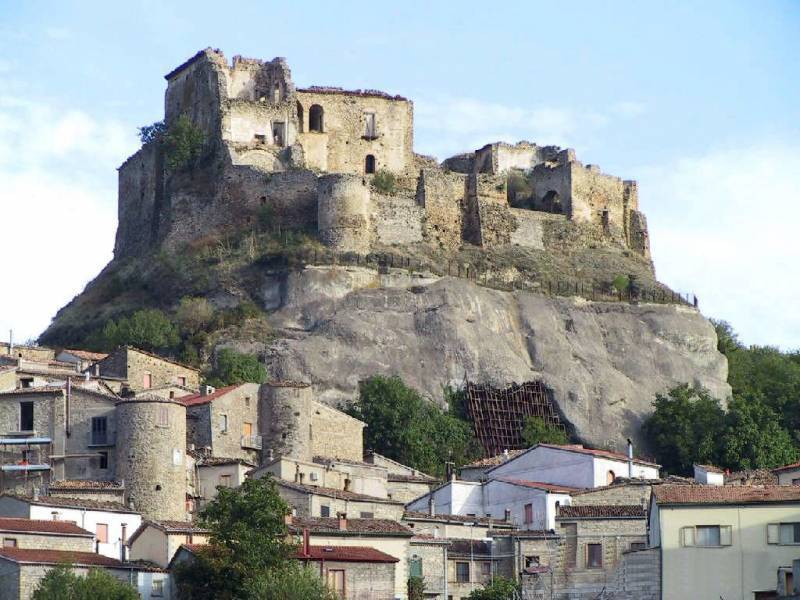The Fortunate Pilgrim
This June, I deepened the ties to my Italianheritage by traveling for the first timeto the villages in Calabria and Basilicatawhere my mother’s parents were born.
I never met either of my grandparents,who married in 1909 at St. Patrick’s OldCathedral on Mott Street and lived onthe next block down. Both died before I was born, but in some ways, I met them byseeing the small towns where they grew up. My grandmother, Rachela Martoccia (shortened to Martocci), was especially vague for me as she had died the year aftergiving birth to my mother in Manhattan.
But to see her lovely hilltop village ofLaurenzana in the Basilicata region, to meetthe people, to kneel at the local shrinesand to taste the food specific to the area allhelped me to better understand her and myItalian ancestry. A castle that served Emperor Frederick IIin the thirteenth century presides fromLaurenzana’s rocky pinnacle. Nearby is an800-year-old church where the remains ofthe holy Franciscan friar Blessed Egidio arevenerated.
The narrow, winding streetson the hill below, the stone buildings androunded towers date to medieval times.The Martoccia family, I discovered, livedin a valley far below these heights andworshiped in a little chapel on the town’soutskirts. I now understood one of thestories about my grandmother: how muchshe enjoyed going up to the ancient castlewhen she was a girl.
Cerasi, my grandfather ChristopherMoscato’s hometown, is up in the clouds inCalabria’s Aspromonte mountains. Drivingthere was a little frightening because I wasso tempted to peek at the breathtakingviews while negotiating hairpin turns. Seeing Cerasi made me appreciate a story I heard about how my grandfather wouldleave home as a youth to work in the fieldswith a bit of bread, cheese and a chestnut inhis pocket. It would have been a very longwalk through those steep, pine-forestedhills to arrive at any fields.
And I wasamazed that someone who came from suchisolated rural splendor could manage toraise six children in Mott Street’s crowdedslums.The people were very hospitable when I metthem on June 13 after Mass for the Feast ofSt. Anthony, Cerasi’s patron saint.
I was invited in for espresso and cookies, andshown the Moscatos’ one-time home andthe communal wood-fired hearth wherebread is baked—a particular favorite for mebecause, perhaps not coincidentally, I aman avid bread baker.
While just a handful live there nowadays, quite a few people with roots in Cerasireturn to the old family homes on weekendsor for vacation and a celebration of St. Anthony in August, demonstrating theancestral magnetism of the villages that dotItaly’s mountain regions.Now I’ve felt that pull, too.
* A professor at Brooklyn College/CUNY, PaulMoses is the author of An Unlikely Union:The Love-Hate Story of New York’s Irish and Italians.


































i-Italy
Facebook
Google+
This work may not be reproduced, in whole or in part, without prior written permission.
Questo lavoro non può essere riprodotto, in tutto o in parte, senza permesso scritto.